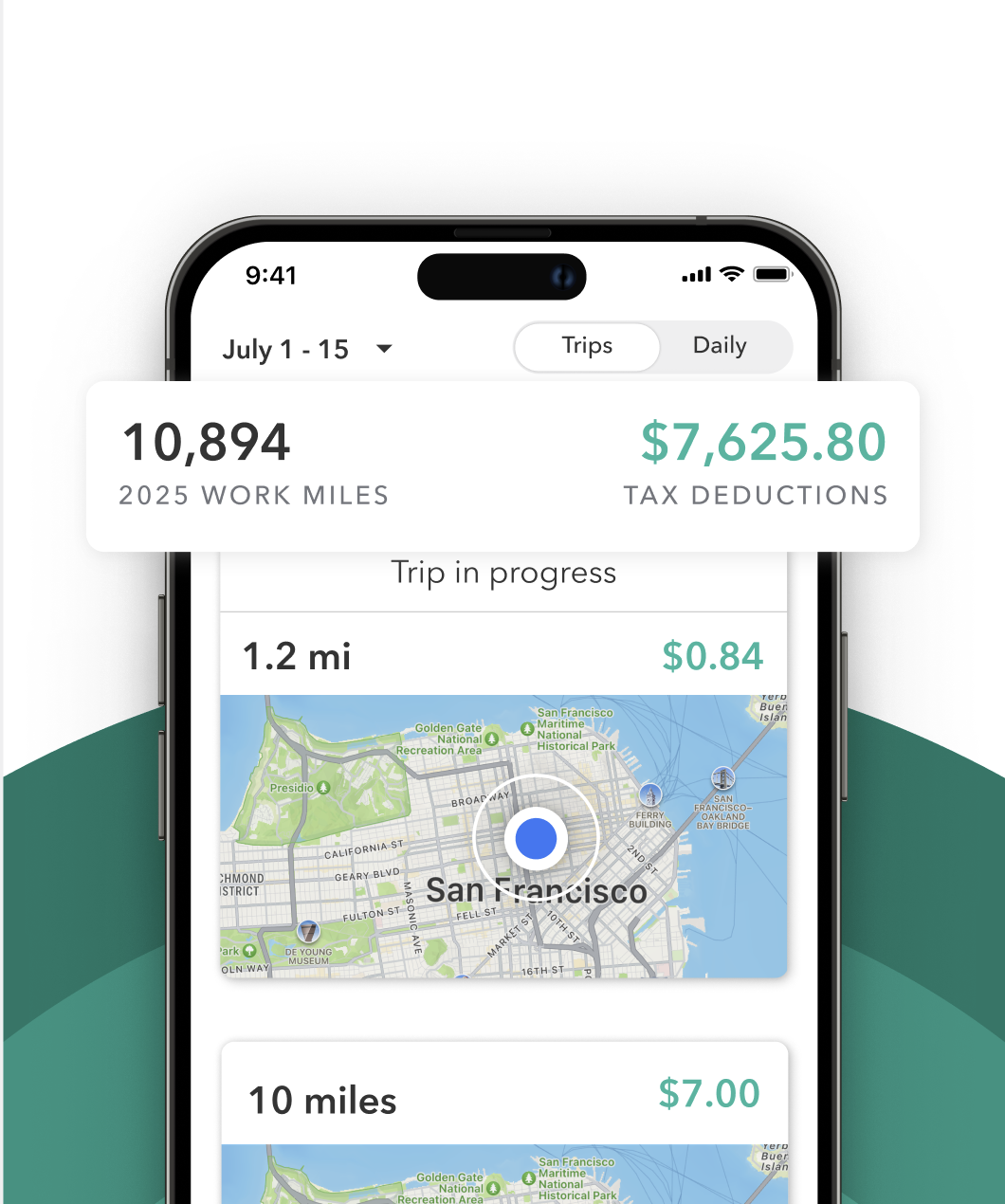If you deliver for Walmart Spark, you’re using your own car, and your own gas, to complete every trip. That means you’re also responsible for your own taxes. But there’s good news: you can deduct the miles you drive for deliveries on your tax return. This deduction can lower your taxable income and reduce what you owe the IRS. In fact, for 2025, every 1,000 miles you drive for work could be worth $700 or more in tax savings.
But there’s a catch: to claim the deduction, you need to keep accurate records of your mileage. That’s where this guide can help.
Why mileage matters when you deliver for Spark
If you’re self-employed (which you are as a Spark driver), the IRS lets you deduct the business use of your vehicle. That means you can write off the costs of driving for work, either using a fixed rate per mile or by tracking your actual vehicle expenses.
There are two ways to claim this deduction:
- The standard mileage rate, which gives you a set amount per mile driven.
- The actual expense method, which lets you deduct a portion of your vehicle expenses like gas, maintenance, and insurance.
Both can lead to big savings, but you can only pick one.
What counts as Spark business mileage?
Not every mile counts. To stay compliant with the IRS, only miles driven for work can be deducted.
This includes:
- Driving to Walmart to pick up orders
- Delivering groceries to customers
- Returning to your delivery zone
- Driving to get supplies (like hot bags or delivery gear)
Personal miles, like your commute to the grocery store for yourself, don’t count.
To deduct mileage, you need a mileage log that shows where you went, when, and for what purpose. That’s where mileage tracking apps like Everlance come in handy, especially for Spark drivers. They track miles automatically, so you don’t forget or fudge anything later.
How to Deduct Spark Mileage On Your Taxes
IRS Mileage Rate
The IRS mileage rate is the most common method for gig drivers. It’s fast, easy, and IRS-approved. It's designed to represent the average it costs to operate a vehicle throughout the year. Your expenses might be higher, or lower...cause it's an average.
To use this method:
- Track your total Spark business miles
- Multiply that number by the IRS rate for the year
- Keep a mileage log in case of audit
Actual Expense Method
This method lets you deduct a portion of your actual car expenses. That includes:
- Depreciation
- Lease payments
- Registration fees
- Licenses
- Insurance
- Repairs
- Gas
- Garage rent
- Tires
- Oil
- Tolls
- Parking fees
You calculate what percentage of your total miles were for Spark, then apply that percent to your total vehicle expenses. If 80% of your miles were business-related, you can deduct 80% of your car costs.
Which method is better for Spark drivers?
It depends on your driving style and costs.
- If you drive a lot of miles and want a simpler option, the standard mileage rate will likely save you more.
- If you don’t drive as much or your car is expensive to maintain, the actual expense method could be worth the extra effort.
Many Spark drivers find the standard mileage rate gives them the biggest deduction with the least hassle. Whichever vehicle deduction method you choose, track everything (miles, expenses, and receipts). You’ll need this documentation if the IRS ever asks.
Final tips for Spark drivers
- Use a mileage tracker app: Mileage tracking apps for Spark like Everlance track your miles in real time and store them safely for tax season.
- Stay consistent: If you use the standard method in the first year you use your car for Spark, you can’t switch to actual expenses later.
- Don’t guess: Guesstimates don’t count. The IRS has strict mileage log requirements
- Combine it with other deductions: You can write off other Spark business expenses like your phone bill, delivery gear, and snacks for the road.











